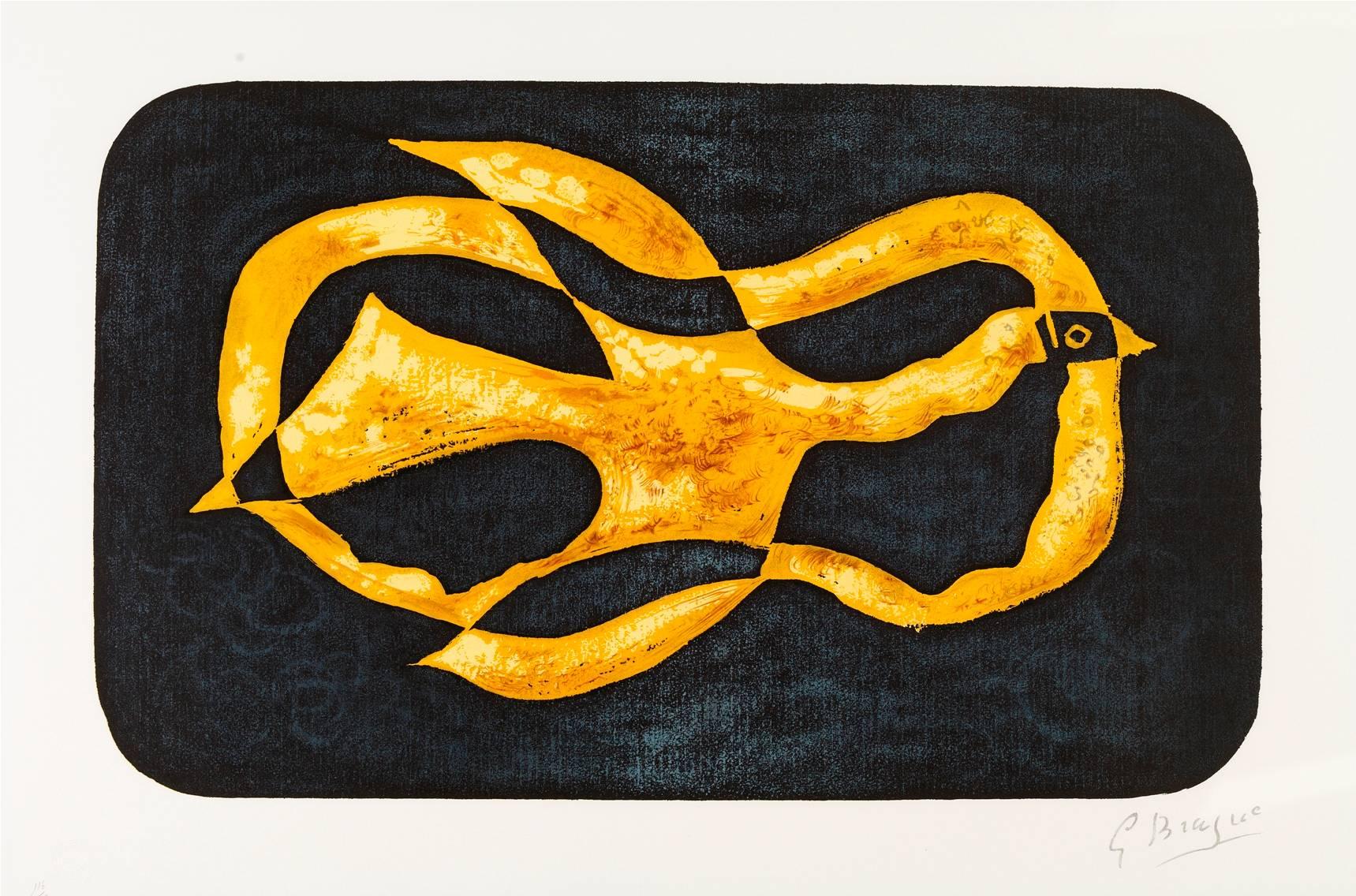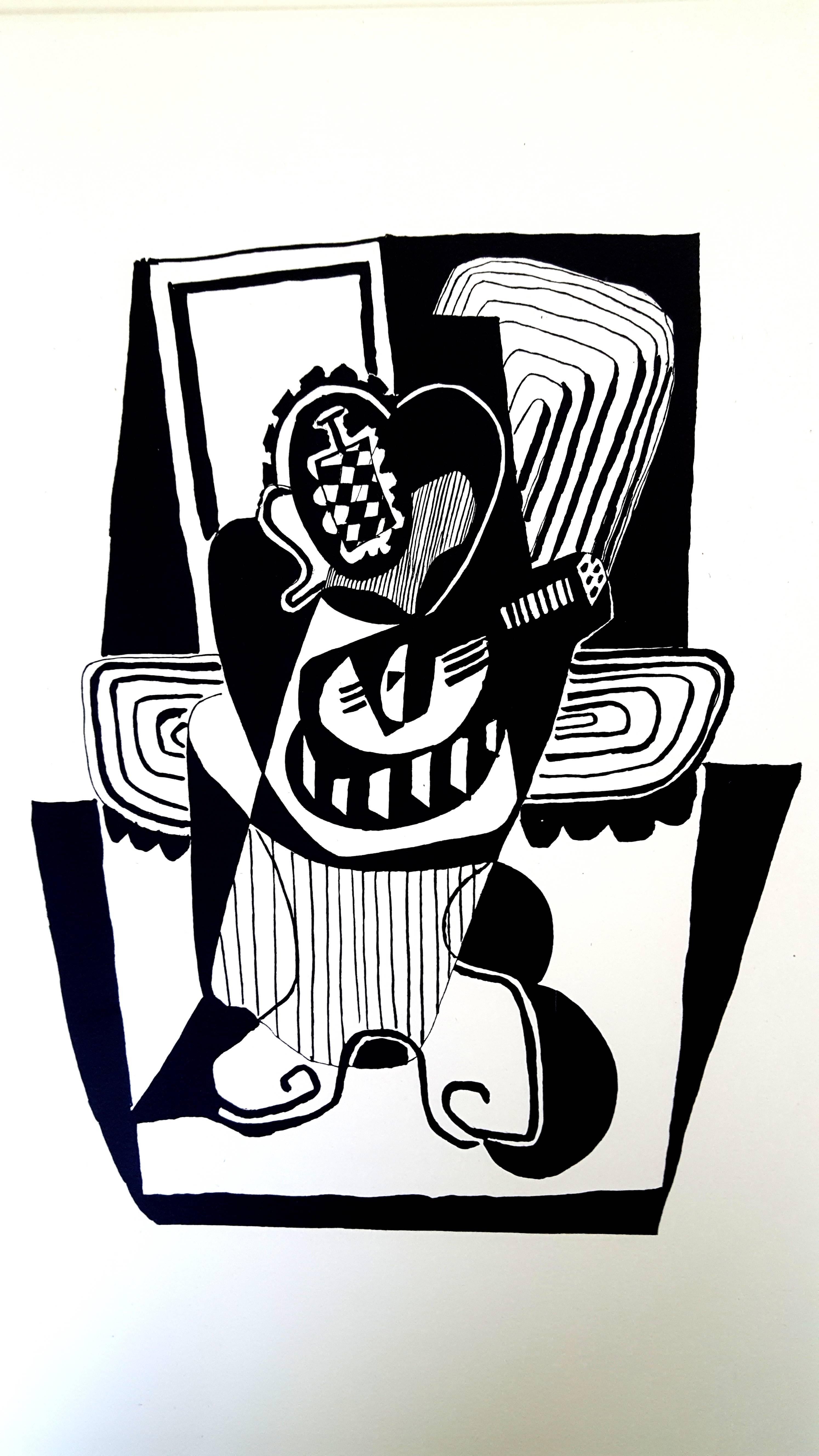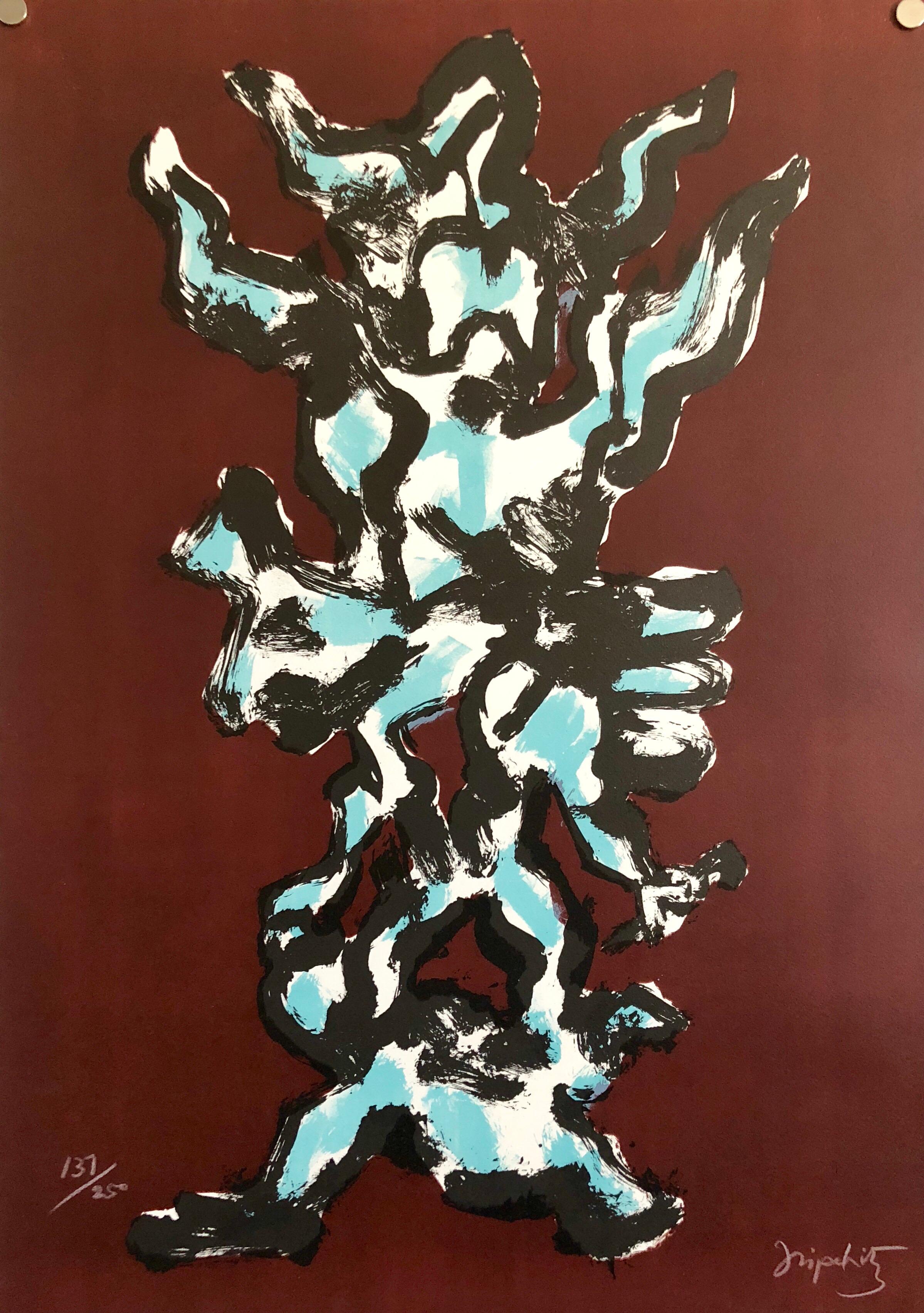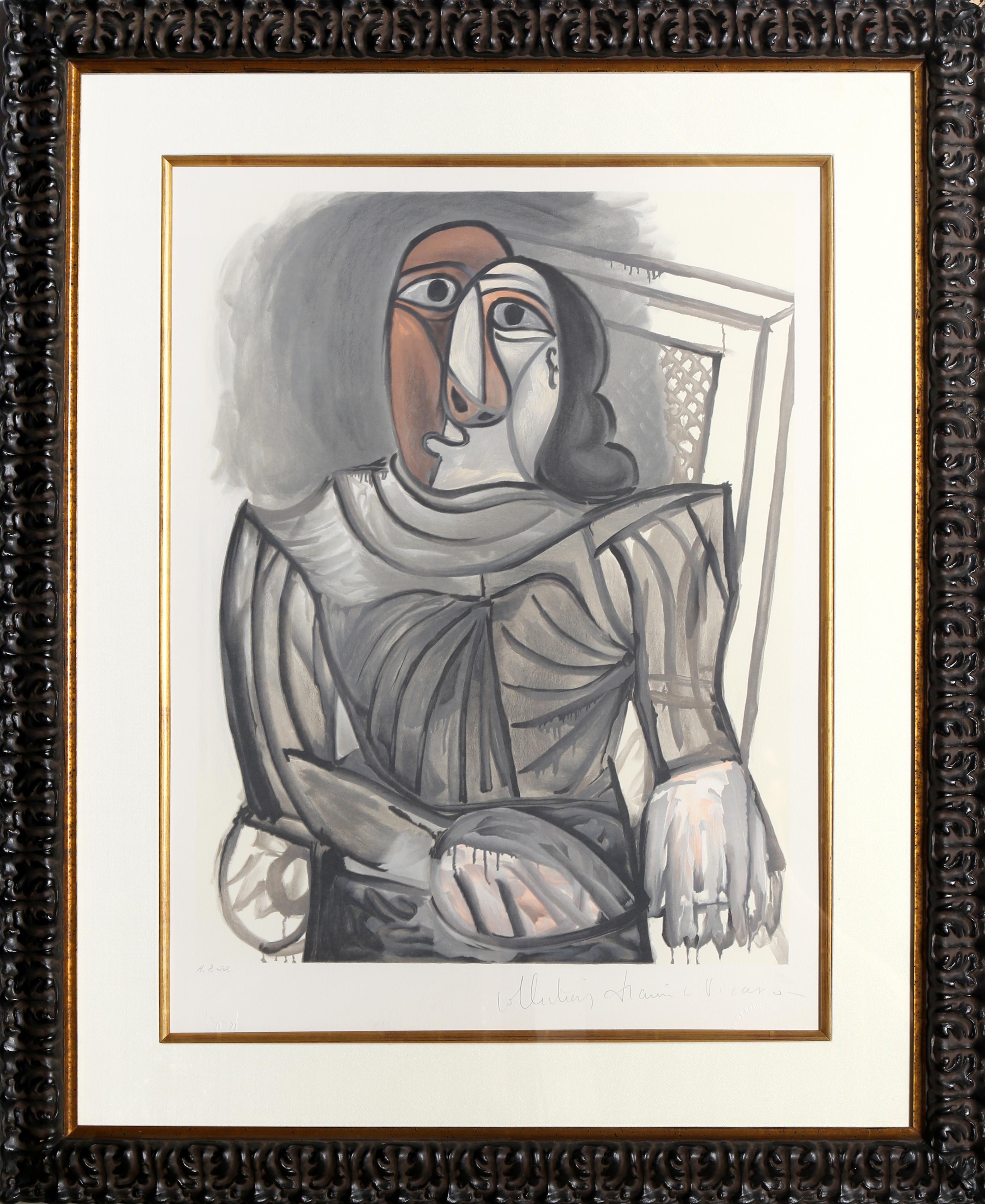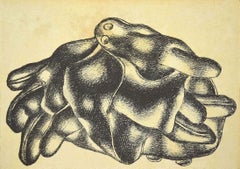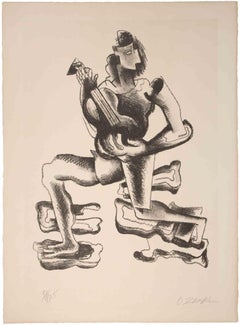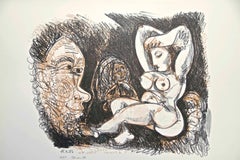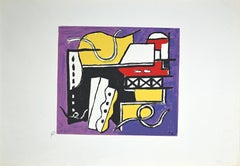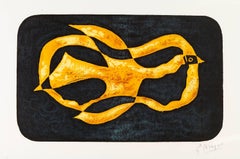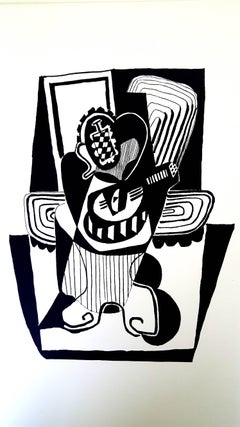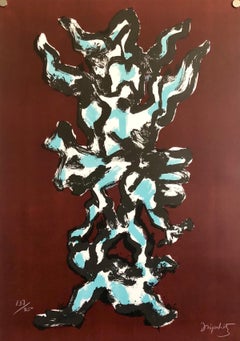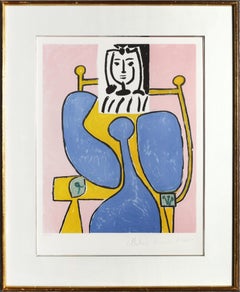Items Similar to La Vache et la Chaise - Lithograph after Fernand Léger - 1959
Want more images or videos?
Request additional images or videos from the seller
1 of 8
La Vache et la Chaise - Lithograph after Fernand Léger - 19591959
1959
About the Item
Lithograph realized after Fernand Léger in 1959, on Richard de Bas paper.
Monogrammed in the plate.
It belongs to the suite "Contrastes", printed by Daniel Jacomet and published by " Au Vent d'Arles".
Edition of 300.
Framed under glass.
Excellent condition.
- Creation Year:1959
- Dimensions:Height: 15.75 in (40 cm)Width: 19.69 in (50 cm)Depth: 0.04 in (1 mm)
- Medium:
- Movement & Style:
- After:Fernand Léger (1881-1955, French)
- Period:
- Condition:Insurance may be requested by customers as additional service, contact us for more information.
- Gallery Location:Roma, IT
- Reference Number:Seller: T-1528471stDibs: LU650315716222
About the Seller
4.9
Platinum Seller
Premium sellers with a 4.7+ rating and 24-hour response times
1stDibs seller since 2017
7,496 sales on 1stDibs
Typical response time: 2 hours
- ShippingRetrieving quote...Shipping from: Grasse, France
- Return Policy
Authenticity Guarantee
In the unlikely event there’s an issue with an item’s authenticity, contact us within 1 year for a full refund. DetailsMoney-Back Guarantee
If your item is not as described, is damaged in transit, or does not arrive, contact us within 7 days for a full refund. Details24-Hour Cancellation
You have a 24-hour grace period in which to reconsider your purchase, with no questions asked.Vetted Professional Sellers
Our world-class sellers must adhere to strict standards for service and quality, maintaining the integrity of our listings.Price-Match Guarantee
If you find that a seller listed the same item for a lower price elsewhere, we’ll match it.Trusted Global Delivery
Our best-in-class carrier network provides specialized shipping options worldwide, including custom delivery.More From This Seller
View AllIMAGE - The Gloves - Original Lithograph after F. Léger - 20th Century
By (after) Fernand Léger
Located in Roma, IT
The gloves is an original lithograph on paper realized by Fernand Léger (1881-1955).
Very good conditions except for some little foxings.
Sheet dimension: 21.5 x 30.5
The artwork ...
Category
20th Century Cubist Figurative Prints
Materials
Lithograph
Guitar Player - Lithograph by Ossip Zadkine - mid-20th Century
By Ossip Zadkine
Located in Roma, IT
Guitar Player is a contemporary artwork realized by Ossip Zadkine
Lithograph on BFK Rives, with watermark and dry stamp 'Bodensee Verlag'.
Includes passepartout each 87,5 x 68 cm.
...
Category
Mid-20th Century Cubist Figurative Prints
Materials
Lithograph
Homage to Pablo Picasso - Lithograph 1974
By Gianpaolo Berto
Located in Roma, IT
Hand Signed. Edition of 25 pieces.
Very good conditions.
Category
1970s Synthetic Cubist Figurative Prints
Materials
Lithograph
Composition - Lithograph after Fernand Leger - Mid-20th Century
By Fernand Léger
Located in Roma, IT
Composition is a screen print realized after Fernand Léger in the mid-20th Century.
Monogrammed in plate and hand numbered in pencil lower right.
The composition is part of a colle...
Category
Mid-20th Century Cubist Figurative Prints
Materials
Lithograph
Picasso Vintage Exhibition Poster in Paris - 1964
By Pablo Picasso
Located in Roma, IT
Picasso Exhibition Poster in Paris - 1964 is a rare and precious print of Pablo Picasso's exhibition held at Galerie Louise Leiris, Paris, 1964.
Offset and photolithographed poster ...
Category
1960s Cubist Figurative Prints
Materials
Lithograph, Offset
Composition - Original Lithograph after F. Léger - Mid-20th Century
By (after) Fernand Léger
Located in Roma, IT
Quartier de Boef is an original lithograph on paper realized after Fernand Léger (1881-1955).
Very good conditions except for some little foxings.
Sheet dimension: 30 x 24
On both...
Category
20th Century Cubist Figurative Prints
Materials
Lithograph
You May Also Like
After Georges Braque - Antiborée - Lithograph
Located in Collonge Bellerive, Geneve, CH
Lithograph after Georges Braque.
Signed in the plate
Edition of 150
Dimensions: 76 x 117 cm
Bibliography:
« Les Métamorphoses de Braque» of Heger de Loewenfeld and Raphaël de Cuttoli , Editions FAC, Paris, 1989.
In 1961 Georges Braque decided with his laidary friend Heger de Loewenfeld to pick up certain of his works to in order to create artworks, this beautiful litograph is one of them.
Héméra in the Mythology:
In Greek mythology Hemera was the personification of day and one of the Greek primordial deities. She is the goddess of the daytime and, according to Hesiod, the daughter of Erebus and Nyx (the goddess of night). Hemera is remarked upon in Cicero's De Natura Deorum, where it is logically determined that Dies (Hemera) must be a god, if Uranus is a god. The poet Bacchylides states that Nyx and Chronos are the parents, but Hyginus in his preface to the Fabulae mentions Chaos as the mother/father and Nyx as her sister.
She was the female counterpart of her brother and consort, Aether (Light), but neither of them figured actively in myth or cult. Hyginus lists their children as Uranus, Gaia, and Thalassa (the primordial sea goddess), while Hesiod only lists Thalassa as their child.
The father of Cubism
Three Cubist that distinguishes art historian periods were initiated and developed by Georges Braque: The Cubist Cézanne (1907-1909), Executive (1909-1912) and synthetic (1912-1922).
Post-Impressionist and fawn, Braque no longer adheres to the contingency of a decorative way or the other. Cézanne’s paintings exhibited at the Grand Palais during the retrospective of 1907 are a revelation: Cézanne sought and invented a pictorial language. In his footsteps, Braque went to the South with the reasons of the Master. He returned with Estaque landscapes and surprising Ciotat it keeps Cezanne geometric model and retains the “passages” continuity from one surface to another to create the sensation of “turning around” of the object represented. But he wants to go after the consequences of the vision of Cezanne. In his paintings Houses in L’Estaque (1908) it simplifies the volumes of houses, neglects detail by removing doors and windows: the plastic rhythm that builds the table. Large Nude , a masterpiece of the period, can be considered the first work of Cézanne cubism .
Systematizing and deepening Braque discoveries open the door analytical cubism. In 1909, his painting became more cerebral than sensual. The pattern is recreated in the two-dimensionality of the canvas, leaving aside any illusionistic perspective. In Still Life with Violin, objects are analyzed facets according to their characteristic elements, each facet referring to a particular view of the object. There are so many facets of points selected view: Table reflects the knowledge of the object and the ubiquity of the eye. Moreover, Braque is looking for the essence of the objects in the world rather than their contingency, which explains the absence of light source and use of muted colors (gray, ocher), contingent aspects of the object . But formal logic has stepped facets, erased any anecdote to the object and ultimately led to his painting a hermetic more marked on the edge of abstraction (see the series of Castle Roche-Guyon ).
Braque, anxious to keep the concrete and refusing at all costs that the logic of Cubism takes the paintings to abstract, reintroduced signs of reality in his paintings in 1912 marks the beginning of Synthetic Cubism. Historians speak of “signs of real” rather than reality because what interests Braque, this is not to put reality into a table, but to create a painting which, by its language, refers to the real. To do this, he invented two major techniques XX th century inclusions and contributions. The inclusions consist of painting objects that have no real depth, materials (wallpaper in Nature morte aux playing cards faux wood is a pictorial inclusion) or letters (calligraphic inclusion in Portuguese ), made first brush and a few months later stencil. Contributions are defined in contrast with the collage on canvas of foreign materials: glued or sand paper, sawdust, etc.. Regarding the collages, Braque used for the first time in September 1912 a piece of adhesive paper imitating faux wood Compote...
Category
1950s Cubist Animal Prints
Materials
Lithograph
Pablo Picasso (after) Helene Chez Archimede - Wood Engraving
By (after) Pablo Picasso
Located in Collonge Bellerive, Geneve, CH
Pablo Picasso (after)
Helene Chez Archimede
Medium: engraved on wood by Georges Aubert
Dimensions: 44 x 33 cm
Portfolio: Helen Chez Archimede
Year: 1955
Edition: 240 (Here it is on...
Category
1950s Cubist Figurative Prints
Materials
Lithograph
$744 Sale Price
20% Off
Large Color French Cubist Lithograph Tree of Life Signed Ltd Ed. Sculpture Study
By Jacques Lipchitz
Located in Surfside, FL
Chaim Jacob Lipchitz, 1891-1973, was born in Lithuania and came of age in Paris during the early 20th century, where he was active in the avante-garde community of Pablo Picasso, Ama...
Category
1970s Cubist Figurative Prints
Materials
Lithograph
Femme Assise a la Robe Bleu, Cubist Lithograph after Pablo Picasso
By Pablo Picasso
Located in Long Island City, NY
A lithograph from the Marina Picasso Estate Collection after the Pablo Picasso painting "Femme Assise a la Robe Bleue". The original painting was completed in 1949. In the 1970's af...
Category
1980s Cubist Portrait Prints
Materials
Lithograph
Femme Assise a la Robe Grise, Cubist Lithograph after Pablo Picasso
By Pablo Picasso
Located in Long Island City, NY
A lithograph from the Marina Picasso Estate Collection after the Pablo Picasso painting "Femme Assise a la Robe Grise". The original painting was completed in 1943. In the 1970's af...
Category
1980s Cubist Figurative Prints
Materials
Lithograph
Femme Assise et Joueur de Flute, Cubist Lithograph after Pablo Picasso
By Pablo Picasso
Located in Long Island City, NY
A lithograph from the Marina Picasso Estate Collection after the Pablo Picasso painting "Femme Assise et Joueur de Flute". The original painting was completed in 1967. In the 1970's...
Category
1980s Cubist Figurative Prints
Materials
Lithograph
